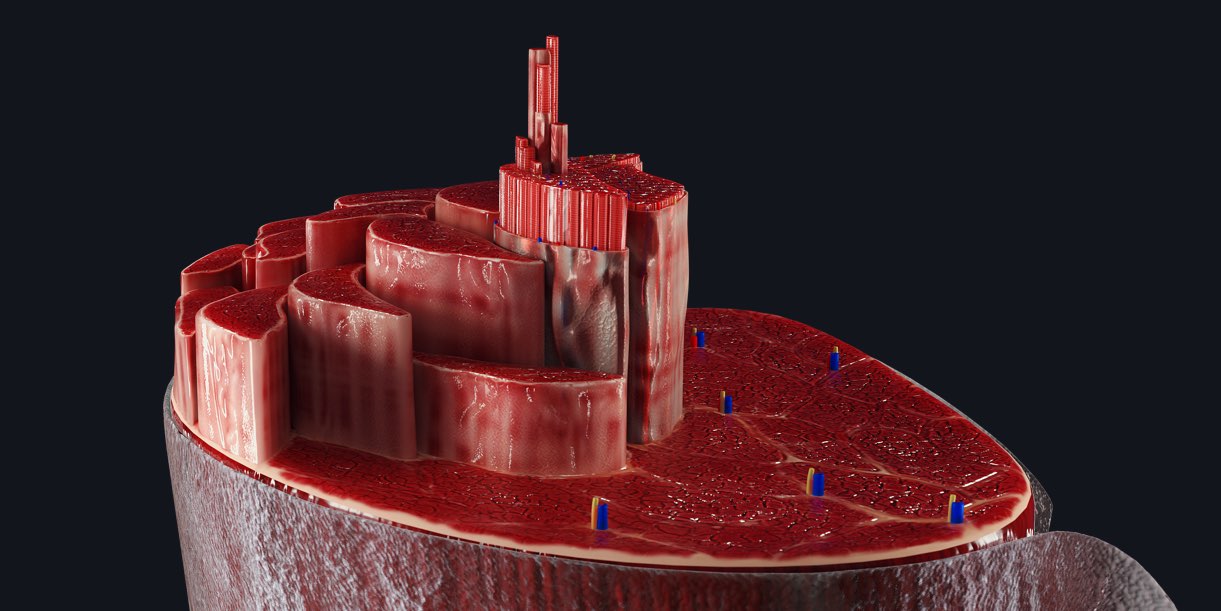
Pictured above is an enhanced view of the Skeletal Striated Muscle.
An individual skeletal muscle is composed of hundreds to thousands of long, parallel muscle fibers bundled together.
There are three types of muscle fibers; Type I, Type IIa and Type IIb.
Type I
These are known as ‘slow-twitch’ muscle fibers. They have a rich blood supply, containing myoglobin and many capillaries, and rely on oxygen to release energy through aerobic respiration. This makes them more resistant to fatigue, with an ability to provide continuous energy for longer ⚡️, but also means that they only have the ability to produce low force.
Type II
These are known as ‘fast-twitch’ muscle fibers. These muscle fibers contract more rapidly, providing bursts of energy but they respire anaerobically and so fatigue more quickly.
They may be further subdivided into:
- ‘fast’: type IIa
- ‘very fast’: type IIb
Type IIa are often referred to as a hybrid of type I and type II. They have a rich blood supply and ?♀️many mitochondria , so they respire aerobically, similar to type I. They also have the ability to hydrolyse ATP quickly, using both aerobic and anaerobic metabolism, and so contract faster than type I.
Type IIb use hardly any oxygen directly; they are anaerobic, and extract energy from organic molecules stored in their cells. As a result they have fewer mitochondria, capillaries and myoglobin.
Naturally, people have different proportions of fiber types in their muscles, and different sports make use of different types. ?️♀️?? For example, sprinters, throwers and weightlifters rely on bursts of power from muscles with a high proportion of fast-twitch fibers. ??♂️ Someone with many slow-twitch fibers in their muscles is unlikely to break records over 100 metres, but someone with a higher proportion of fast-twitch muscle fibers will have a harder time getting in shape for a marathon.
The percentage of each muscle fiber present in an individual is determined by three factors: genetics, hormone levels within the blood, and the level of training undertaken.
The skeletal muscle is one of 14 microanatomy models on the Complete Anatomy platform. Experience the minute detail of the human body in stunning 3D. Try it for FREE today.
